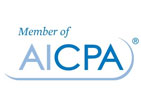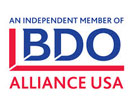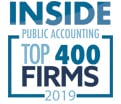The average company’s balance sheet understates its value by 80%, according to Sarah Tomolonius, co-founder of the Sustainability Investment Leadership Council. Why? Intangible assets aren’t recorded on the balance sheet under U.S. Generally Accepted Accounting Principles (GAAP) unless they’re acquired from a third party.
What’s the purpose of a corporation? For the last 50 years, the answer was “to maximize shareholder value.” But, on August 19, CEOs of 181 leading U.S. businesses, including Amazon, Apple, General Motors and Walmart, pledged to broaden the scope.
Posted in Audit & Assurance
Has your organization received any public or private grants to fund its growth? Grants sometimes require an independent audit by a qualified accounting firm. Here’s what grant recipients should know to help facilitate matters and ensure compliance at all levels.
Posted in Audit & Assurance
It’s important for franchisors to periodically audit individual franchisees. These routine “check-ups” are especially valuable in a store’s early years of operations or if performance starts to deteriorate. They can be used to detect symptoms of unhealthy performance and treat problems before they spiral out of control.
Posted in Audit & Assurance
Every financial transaction your company records generates nonfinancial data that doesn’t have a dollar value assigned to it. Though auditors may spend most of their time analyzing financial records, nonfinancial data can also help them analyze your business from multiple angles.
Posted in Audit & Assurance
AUP Engagements: A Middle Ground Between Audits and Consulting Services

Posted by Melissa Motley, CPA on Jun 10, 2019
Your CPA offers a wide menu of services. An audit is a familiar type of attestation service that provides a formal opinion about whether the company’s financial statements conform to U.S. Generally Accepted Accounting Principles (GAAP).
Posted in Audit & Assurance
Businesses use two types of audits to gauge financial results: internal and external. Here’s a closer look at how they measure up.
Posted in Audit & Assurance
Lean Manufacturers: Reap the Benefits of Lean Accounting

Posted by Melissa Motley, CPA on May 07, 2019
Standard cost accounting doesn’t necessarily work for lean operations. Instead, lean accounting offers a simplified reporting alternative that generates more timely, relevant financial data. But it’s not right for every situation.
Posted in Audit & Assurance
Auditing Accounting Estimates and the Use of Specialists

Posted by Melissa Motley, CPA on Apr 09, 2019
The Public Company Accounting Oversight Board (PCAOB) recently voted to finalize two related standards aimed at improving audits of accounting estimates and the work of specialists. Though the new, more consistent guidance would apply specifically to public companies, the effects would likely filter down to audits of private entities that use accounting estimates or rely on the work of specialists.
Posted in Audit & Assurance
Simplifying the Accounting Rules for Convertible Debt and Equity

Posted by Aaron K. Waller, CPA on Apr 04, 2019
Distinguishing between liabilities and equity on a company’s balance sheet may seem straightforward. But difficulties arise when it comes to the terms of complex securities and financial contracts like redeemable equity instruments, equity-linked or indexed instruments, and convertible instruments.
Posted in Audit & Assurance




-1.png)








-1.png)






